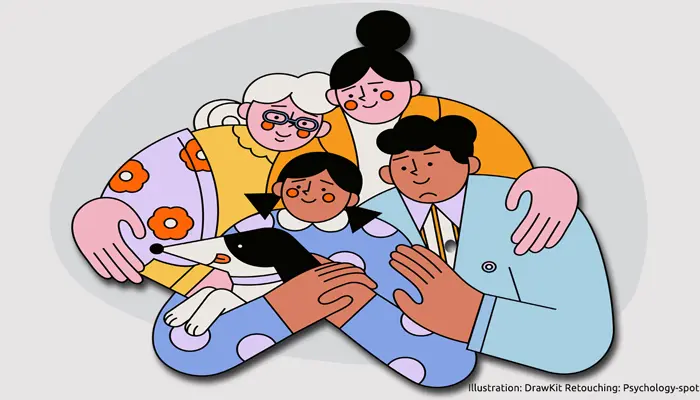
Childhood is a happy time. Or at least we think so. But the truth is that also children have problems, conflicts, fears and insecurities that adults often underestimate or even ignore because they consider them not important.
A study conducted at the University of California revealed that parents often have an unrealistic and overly optimistic view of their children’s emotional life. These researchers found that parents of children between the ages of 4 and 11 tended to underestimate childhood worries and anxiety, exaggerating their children’s optimism. “The mismatch between the perceptions of parents and children generates an alarm,” the researchers concluded.
And is not for less. The problem is that sometimes this disconnection has a very high price.
Last year, for example, 14 children under the age of 15 committed suicide in Spain. Anxiety and depression disorders in children have also skyrocketed, showing that the youngest are not immune to the uncertainty and tension that we have been in since the pandemic began. In this context, Childhood and Adolescent Psychology takes center stage as it allows monitoring, diagnosing and treating children’s problems before they get too bad.
The first years of life mark us – for better or for worse
“Give me a dozen healthy and well-formed children and my specific world to raise them, and I promise to take any of them at random and train them to become any type of specialist: doctor, lawyer, artist, merchant and even beggar or thief,” wrote behavioral psychologist J.B. Watson in 1930.
Although his words sound categorical, the truth is that great psychologists with very different approaches, such as Freud, Piaget or Vigostky, agreed with him: the first years are essential for the formation of the personality and often mark our lives forever. If during those years children suffer bullying situations, are exposed to traumatic events or develop a psychological disorder, such as ADHD, depression or childhood anxiety, the labels we place on them could accompany them throughout their lives and even become a limit that prevents them from developing their potential.
In fact, the main problems faced by children and adolescents suffering from mental disorders are often stigma, social exclusion, abuse and stereotyping. Often they not only have to face the challenges posed by mental illness but also deal with the misunderstanding and ignorance of those around them.
Growing up in this context can end up generating more emotional limitations than the psychological disorder itself. That is why it is essential to start celebrating differences, rather than feeling threatened or scared by them. It is essential to pay more attention to childhood problems. Listen to the children. Observe them. Let them know that whatever happens, they can count on us. Whatever happens, we will continue to love them. But it is also essential to seek help. Because many times love and good intentions are not enough to solve certain mental health problems.
Family psychoeducation facilitates acceptance and change
Psychoeducation is a very valuable tool to help children and adolescents, as well as their family, to understand the nature of the psychological problem. It provides the tools so that children and their parents can better manage the situations of daily life, promoting autonomy, empowerment, social integration and family balance.
In fact, a study carried out at the University of Barcelona found that psychoeducational interventions are particularly effective during the early stages of mental illness, when symptoms are still mild. In those cases, the remission rate is higher and the quality of life improves.
A meta-analysis conducted at Tianjin University also concluded that “Brief psychoeducation reduces relapses in the medium term and promotes short-term compliance with medication.” Therefore, just 10 sessions could be enough to promote the necessary change in the child and his family environment.
Family psychoeducation provides three great advantages that we should all know about:
1. It allows to know better the basic psychological problem
Explaining to children or adolescents, as well as to their families, the causes and effects of a psychological disorder allows them to better understand what they are experiencing. Psychoeducational intervention provides them with an explanation of what is happening to them, in a way that helps them to give coherence and meaning to their experiences by providing answers to many of their questions.
In fact, for many families having a diagnosis can be liberating since it allows them to understand experiences that until then made no sense. For this, the main goals of psychoeducational interventions is to help families understand the mechanism of psychological disorder to promote more adaptive behaviors and limit harm. Children and their parents learn to identify the red flags to act before it is too late.
2. Develop a more positive attitude towards the psychological problem
For some families, the diagnosis is liberating. Not for others. Some parents may worry a lot or even feel terrified. Others may fall into stereotypes about mental illness. They are normal reactions. However, through family psychoeducation they will be able to better understand what is happening, change dysfunctional beliefs and develop a more objective and positive perception of the disease.
Psychoeducation provides a safe space of containment for children or adolescents and their parents to express their apprehensions, fears and insecurities, which usually reduces emotional over-involvement, hypercriticalism, guilt and hostility, favoring accompaniment and improving the family climate . This type of intervention allows expectations to be adjusted and offers confidence to parents and their children to better cope with the problem.
3. Enhances quality of life and well-being
Psychoeducational interventions tend to improve therapeutic adherence. Parents understand the importance of following the treatment, so very soon they begin to notice an improvement in the behavior of the child or adolescent and their quality of life increases, as well as that of all the components of the family nucleus.
Family psychoeducation also provides clear guidelines for action, which reduces stress and increases self-efficacy. It usually reduces the feeling of incapacity and allows planning for the future, which reduces anxiety and creates a more proactive environment for the whole family. Family psychoeducational interventions also promote the emotional release of anguish, fear and discomfort, in a way that prevents overexertion or overprotection. By having the necessary space, the functional performance of the child or adolescent tends to improve, along with their well-being and psychological balance.
Finally, it is worth clarifying that psychoeducational interventions are usually in the hands of a psychologist. However, other professionals with a psychological background, such as educators who attend educational intervention programs, could also acquire the knowledge and skills necessary to detect, guide and support children experiencing psychological problems and their families.
Sources:
Godoy, D. et. Al. (2020) Psicoeducación en salud mental: una herramienta para pacientes y familiares. Revista Médica Clínica Las Condes; 31(2): 169-173.
Zhao, S. et. Al. (2015) Psychoeducation (brief) for people with serious mental illness (Review) Cochrane Database Syst Rev; (4): CD010823.
Casañas, R. et. Al. (2014) Efectividad de un programa grupal psicoeducativo para la depresión mayor en atención primaria: ensayo clínico controlado aleatorizado Rev. Asoc. Esp. Neuropsiq; 34(121): 145-146.
Lagattuta, K. H. et. Al. (2012) Do you know how I feel? Parents underestimate worry and overestimate optimism compared to child self-report. J Exp Child Psychol; 113(2): 211-32.



